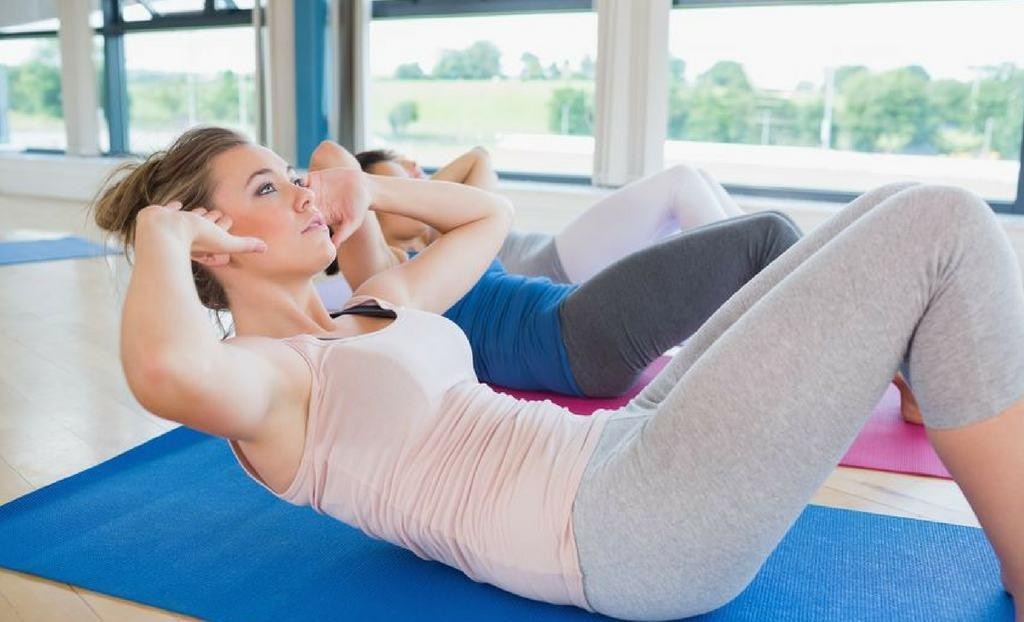There are many myths that float around the fitness industry. While some myths can be harmless, others can actually hinder your progress and prevent you from setting off in the right direction from the very start.
To help make sure that you have all the best knowledge and information to hit your goals, here are some of the most common fitness myths that you may have heard, and some facts to set the record straight.
Avoid Believing These Common Fitness Myths and Get the Facts
Myth 1: Sit Ups/Crunches = Abs
A common misconception is that to get ripped abs, you need to do hundreds of crunches and sit-ups every day. This exercise only targets your abdominal muscles, and to get abs, you need to target more than just that muscle group and watch your caloric intake.
While this doesn’t mean that you should banish crunches from your training regime, just bear in mind that there are other really great exercises that may be even more beneficial in helping you sculpt and tone your core.
Other exercises such as leg raises, hanging leg raises, and different type of crunches such as decline crunches, air bike and oblique crunches are great ways to get those abs. Try a variety of exercises to target muscles in your front, side and back. Take a look at an exercise library, such as with Jefit workout app, that will give you some better ideas on what you can do instead.
Myth 2: The More You Train, The Better
Another myth that athletes and gym goers believe is that you don’t need rest days; the more you train, the faster you will generate results.
However, this fitness myth can have the opposite effect. Not incorporating enough rest days into your routine can lead to your body’s inability to recover properly in time for your next session. In fact, you will be doing yourself more harm than good.
Make sure you use a workout log to schedule in rest days so you do not skip them. By putting them into your regime, you will be more inclined to follow it.
Myth 3: Gym is a Solitary Activity
Many people believe that working out at the gym is a mostly solitary activity. You head in, put on your headphones, and do your workout and leave.
While it may be difficult to find other gym goers that can go to the gym at the same time as you, an alternative is to take advantage of the digital era and find an online community. There are many supportive people online in which you can turn to for encouragement, advice and even just to chat too.
Myth 4: If You’re Not Sore, You Didn’t Work Hard Enough
Some gym goers take the sign that if you are sore then you had a great workout, but if not, then you didn’t work hard enough. Some may think that it is an indication that your muscles are growing. However, this one of those fitness myths that is not necessarily true.
Seasoned gym goers may not have felt sore the next day but it doesn’t mean that they didn’t do enough to get results. Especially if you have been training 5-6 weeks a day, your body would have been conditioned to your training so you probably won’t feel as sore as someone who is new to it.
It doesn’t mean you are working any less harder.
However, if you do wake up sore, try to use a foam roller to massage and loosen your muscles. Also, remember to stretch before and after your workout to minimize the chance of soreness.
Myth 5: Your Gym Workout Need to Be Long
Another one of those misleading fitness myths is that in order for your gym session to be effective, it needs to be long. For those who hate long, laborious gym sessions, this is great news.
Shorter, intense workouts may be more effective than longer workouts with less exertion or LISS (Low Intensity Steady State cardio). This is particularly useful for the on-the-go, busy lifestyle that most of us lead now.
This is why HIIT (High Intensity Interval Training) is becoming more and more popular by the day. As workouts are shorter, people tend to work out harder as opposed to reserving energy because they know they have a long session ahead.
However, this doesn’t mean to say that long 45-minute to one hour sessions are useless. It depends on your personal preference and whatever you can stick to consistently.
Myth 6: The Scale is the Best Way to Track Your Progress
People mostly step on their scale to track their progress. However, this method may give you incorrect information.
While it will show you your weight mass, it doesn’t differentiate between fat and muscle mass. This means that even if you are losing fat and gaining muscle, the number on the scale may not change. In fact, it may even increase.
It can be really dangerous and disheartening only using the scale number to track your results. There are other, more accurate ways to do so such as with tape measurements and progress pictures.
Jefit is a gym workout app that helps all gym goers and athletes keep on track with their fitness goals. It has the largest exercise library complete with free workout routines to help mix up your training. It also gives you the ability to update and share your workout log with the supportive community. With Jefit on your phone, you will be hitting your fitness goals in no time at all.
- 5 Bodyweight Exercises When You Can’t Get to the Gym - February 7, 2025
- Exercise Training Tips for Beginners - February 3, 2025
- 5 Tips on Getting Back to the Gym After a Long Break—And What to Expect - January 1, 2025
